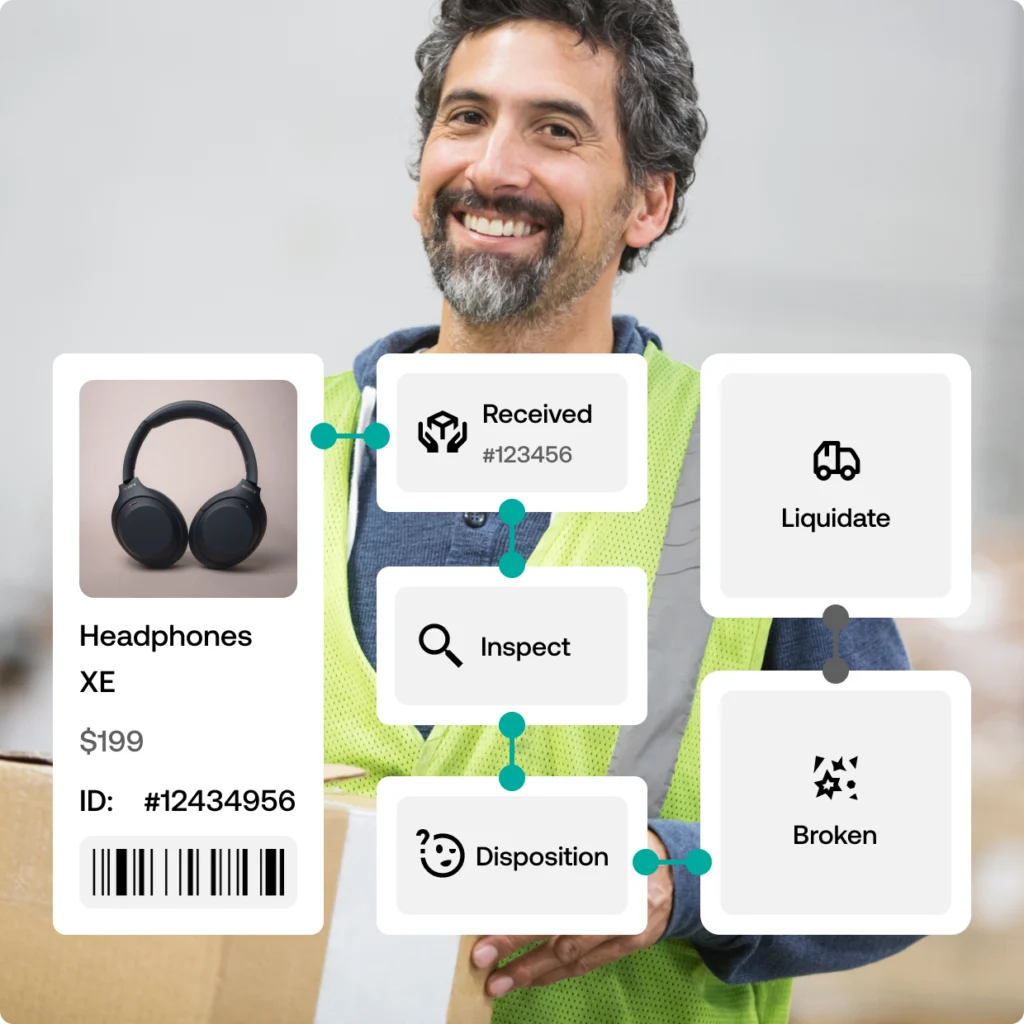How to Automate Ecommerce Warranties for Future Business Growth

We know that an automated warranty process can boost your ecommerce sales, but driving shopper conversions is not the only benefit. Automating warranty claims can also prepare your company for expansion. Whether you anticipate launching new products, incorporating new sales channels or investing in talent acquisition, streamlining your approach to warranties is a smart first step.
Manually managing warranty claims is a costly and time-consuming business responsibility. Often, it can impact the entire spectrum of company resources. Customer service, fraud prevention, inventory management, order fulfillment and marketing all play a role. Which means there are plenty of opportunities for mistakes.
Automation can simplify the hassle of warranty returns for retailers, just as it does for buyers. Higher efficiency allows a smaller customer service team to help more customers, reduce the time spent on claims and shift more of their focus to profit-generating activities. A customized workflow removes uncertainty from warranty dispositions and resolves claims more quickly. Data analysis flags potential problems early on and informs decisions about the company’s future.
As you can see, the comprehensive advantage of an automated warranty process is hard to ignore. Growing companies, in particular, should take a closer look at how reimagining their warranty claim methods could strengthen the foundation of their business.
How Warranty Automation Makes it Easier to Help Customers

At ReturnLogic, we know that manually managing a warranty return can require an average of 10 touchpoints, takes 15 minutes, and costs your company $5 per claim. The cost adds up quickly. $3,750 in labor wages per 1,000 returns, in fact. And that doesn’t even account for the damage that a poor experience can do to Customer Lifetime Value (CLV).
Despite the expense, most Shopify sellers still use a manual process for warranty returns management. In many cases, they also separate the warranty workflow from other types of returns, such as exchanges, store credit or refunds. For these retailers, launching a new product or expanding to more marketplaces brings a flood of new warranty claims and a scramble to hire employees to keep up.
But imagine giving your customer service team the ability to focus on the customer complaint rather than looking up orders, checking compliance with the warranty policy, creating shipping labels and logging each step along the way. How do you think that would impact your ability to grow?
Free Up Time for Customer Support Employees
With an automated returns program, a customer with a warranty issue doesn’t have to monopolize your employees’ time. It can eliminate the need to email or copy and paste the initial request across multiple communication tools and instantly update other relevant departments. In addition, detailed RMA forms no longer have to be transferred from an intake form to internal spreadsheets with less-than-ideal accuracy.
While some retailers may fear that transitioning to an automated warranty program will mean a loss of flexibility and control, those concerns are easily addressed. The ability to require images that document defects and identify customers with repeat claims actually makes your warranty claims less prone to fraud.
Plus, integration with help desk tools like Gorgias, Gladly, or Zendesk can support real-time communication with shoppers, allowing for a more agile response and possibly mitigating some claims from manual intervention completely.
Simplify Processes with an Integrated Third-Party Warranty Program

Automation also allows retailers to integrate a third-party warranty program to gather data on buyers from sales channels other than your ecommerce store through product registration.
When someone purchases a product from a third-party marketplace like Amazon or Ebay, a third-party warranty portal allows customers to provide data about their purchase. Customers can submit contact information, proof of purchase and SKU or serial numbers with little, or no, assistance from your customer service department.
It gives them eligibility for warranty coverage. But it also gives you more insight into the causes of your warranty claims. In addition, it results in a valuable marketing list that you can use to cultivate a profitable relationship with buyers who purchased items through a third-party channel.
Leveraging the numerous customer-facing advantages of automating ecommerce warranties means that companies enjoy improved processing time and skyrocketing customer satisfaction. As a result, we often see refunds for warranty claims fall by as much as 30 percent after implementing an automated warranty system.
So, for companies preparing for growth, warranty automation is a win-win. The elevated customer experience attracts more buyers and eases the demands on your existing customer service team. Without a tedious manual workflow slowing them down, they’ll be more capable of handling what lies ahead.
Use Warranty Automation to Improve Your Warehouse Operations

One of the areas of your business that will be most impacted by growth is your warehouse and operations team. They will need to increase their fulfillment capacity, and inventory management will become more complicated.
New products may require drastically different packing and shipping requirements while keeping up with visibility to multiple sales channels can be a challenge as retailers attempt to scale. The last thing you should want to do in these circumstances is make warranty claims and disposition steps more difficult than they need to be.
Fortunately, your warehouse operations can capitalize on warranty automation too. In the highly-competitive ecommerce industry, shoppers are conditioned for quick resolutions when something goes wrong. A manual back-and-forth between your customer service department and your logistics team every time a customer makes a return will hinder your growth, not support it.
But automation can expedite the interactions between these two divisions so that you can meet customers’ expectations. Advantages like instant shipping labels and working from a single database for claim status visibility can speed up the process considerably.
And since our clients find more than 60% of warranty claims are for damaged or defective items, keeping your inventory updated along the way is critical. Ecommerce growth is not possible without a precise understanding of your current stock. This is why warranty return tools like ReturnLogic accommodate customized workflows that direct the return to its next destination, whether that means re-stocking, refurbishment, liquidation, donation or something else. Meanwhile, inventory status is seamlessly updated for all relevant teams.
Find & Fix Problems Faster with an Automated Warranty System

Before any ecommerce companies start making plans for growth, they should strive for the most effective quality management system to control warranty claims. Obviously, the sooner you can correct a problem, the less it will cost and the smaller the impact will be on CLV and your brand. More importantly, the inability to detect flaws will become a more significant issue as a company grows.
The larger the retail operation, the harder it can be to identify problems with a specific SKU or the deficiency of a supplier. Disjointed data and messy spreadsheets can hide the problem, making them almost impossible to recognize.
However, the complete and collated data that comes with warranty automation can help your company spot problems related to your products’ manufacturing, shipping or quality. In addition, automation encourages data analysis that can reveal troubling trends and guide data-driven decisions.
While some products are not as prone to high failure rates, others, like electronics, are highly susceptible. Analyzing the data for these types of products is an essential endeavor for retailers. But regardless of how often it occurs, companies will always benefit from performing some sort of root-cause analysis when a product fails.
Successful growth plans include a commitment to collecting the appropriate data and generating reports about product quality regularly. Warranty claims only happen when there’s a problem. They aren’t a function of poor fit or mismatched expectations like other types of returns. Retailers with serious aspirations for the future need to implement the root-cause analysis necessary to identify trends and develop a plan to improve their products.
Build a Plan for the Future Thanks to Warranty Automation

Similarly, decision-makers at every level of a retail organization can take advantage of more accessible, better-organized data to make informed plans about the next steps for growth. Metrics about product performance, supplier relationships and opportunities for cost reductions can help put a company in a better position to grow faster and more strategically.
By analyzing disposition data, retailers can identify trends in product performance, such as which products are most likely to be returned due to defects. This information can help leadership make informed decisions about which products to carry and how to execute improvements that lead to fewer warranty returns.
We know fewer warranty returns will increase customer satisfaction and strengthen customer loyalty. Conversely, a lack of automation and data collection can make it harder to understand when or why a shopper has churned. A blind spot here can result in wasted marketing dollars as you chase former customers, making the problem more expensive.
Growing companies can also use meaningful disposition data to build better supplier relationships. Analysis can identify shortcomings that allow retailers to resolve product or raw material issues or prioritize the best partners and supplier relationships to support future pursuits.
Finally, shipping products back and forth and handling customer complaints are expensive tasks. Giving decision-makers actionable insights to minimize the number of warranty claims and increase efficiency saves time and money. It’s simply a smart approach to business and a proven recipe for growth.
Build a Foundation for Growth with ReturnLogic
Growing your company will always be hard work, but it should be something to strive for, not dread. An automated warranty program is one of the best ways to navigate the challenges of growth and reach business goals faster. Just take a look at how automating warranties helped Groove Life and goodr.
Are you ready to ease the burden of warranty returns and increase customer service capacity by as much as 60%? Our returns experts can show you the positive impact an automated warranty solution can have on your business.
Reach out now to schedule your free ecommerce returns audit to learn more.
Ready to talk to a warranty returns specialist?
Schedule a free ecommerce returns audit today!






